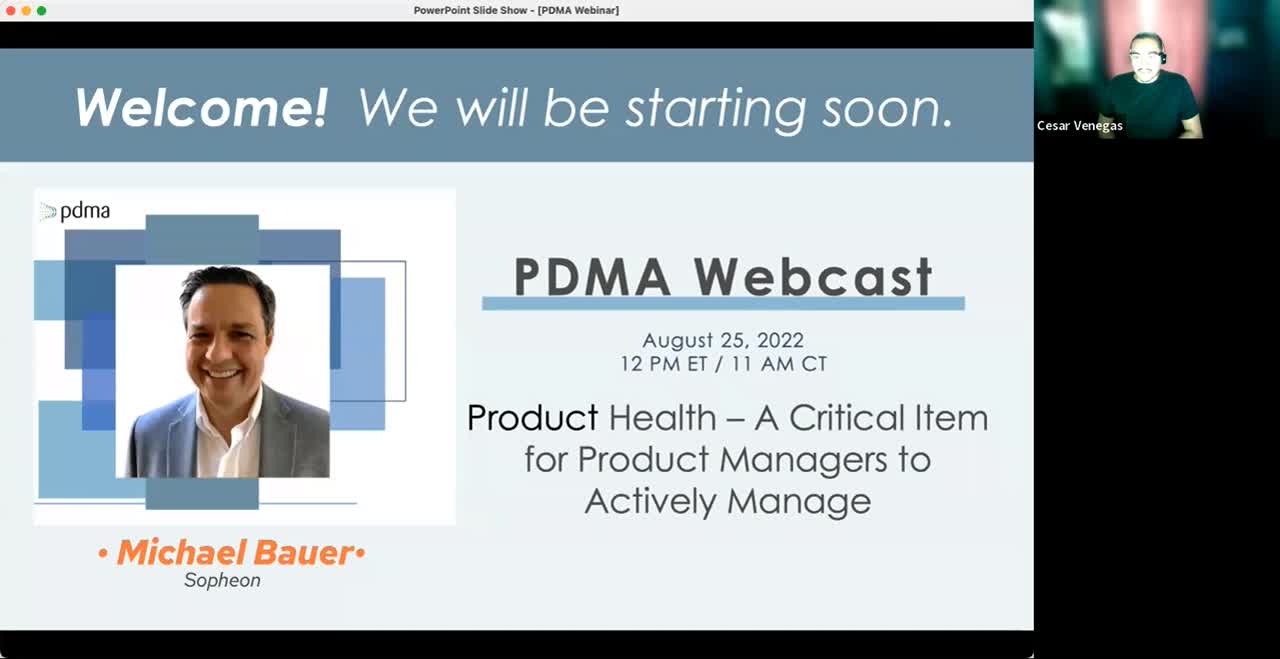Launching a product represents a significant monetary and time investment, so it only makes sense that product managers proactively monitor product health throughout its lifecycle. Unfortunately, in my experience, about half of product managers actively manage their products’ health. About 40% say they don’t participate in any product health activity, and the other 10% don’t know anything about product health. That’s a pretty alarming number.
I’m a fan of analogies, and there are rather significant similarities between product health and human health. First, human health can be physical, mental, attitudinal, etc. The same with products—are we talking about customer satisfaction, revenue generation, innovation, adoption, or other factors that matter to your business? Maintaining the best possible health requires monitoring regardless of how it's defined.
As we’ll discuss, the lack of product health monitoring results from many factors. However, with the right strategies and tools, product managers can more effectively keep track of product health and use those metrics to make better decisions and tradeoffs.
The benefits of product health monitoring
The phrase, “You don’t know what you don’t measure,” is apropos when discussing product health. A product could be rolling along smoothly, but there are any number of benefits you could find to make it even more successful through product monitoring. And to take a more concerning view, undetected issues could be on the verge of bubbling over because no one is catching warning signs.
Here are some benefits organizations experience with a proactive product health monitoring approach:
Pinpointing potential issues. When a product is successful, it’s easy—but potentially dangerous—to assume the status quo will continue. However, market shifts, customer preferences, and disruptive technology can impact product health. Consistently monitoring product health can help you to identify issues early and make adjustments to the product to maintain the expected market share.
Identifying opportunities. At times, components of a product perform well above expectations. Spotting positive trends early on can help you plan and make informed decisions regarding new, radical innovations ands future iterations of the product that inspire the incorporation of these features in other products across the portfolio.
Gaining customer insight. A significant aspect of product health maintenance involves talking to customers to better understand their relationship with the product. Has it changed for the better, worse, or at all? You can also determine if there are emerging factors that impact that relationship. Product people are continuously trying to solve customer problems, and checking product health via customer interaction is a great way to see the genesis of those solvable problems.
Maintaining compliance. Regulatory compliance continues to rise as a top business concern, especially for companies that integrate software with physical products. When you perform consistent, rigorous product health checks, it’s easier to spot incidences that could lead to non-compliance. This is especially important in industries with new compliance laws or ones on the verge of being passed.
Understanding product health metrics
At the heart of any study is data. What does it tell us, and how can it help inform future decisions? Unfortunately for product managers, there’s no written-in-stone list of metrics to determine product health. There is, however, a method for determining the most critical product health metrics for your specific company and product.
Define what product health means.
Actively managing your product's health is no different from managing physical health. You need to identify what a healthy product means based on the specific elements of the product and the company’s mission. You need to define what's healthy for you and your product based on where it is in its life cycle and context. Product health metrics for a software product early in its lifecycle include things like sign-up rates. On the other hand, legacy hardware or physical product health is often evaluated more on revenue and adoption.
Product health is contextual even within the same company. Health metrics for one product aren’t necessarily the same for another, based on many factors: product age, customer segment, price points, etc. In short, goals and metrics must be unique to the product.
Determine the most critical and smallest number of metrics to track.
Data analytics have become so refined that you can identify as many metrics categories as your imagination can dream up. But for product health, this falls under the ‘too much of a good thing’ category. Once the list of product health metrics grows too long, determining health becomes nearly impossible. Further, the more metrics you score, the further away you can get from focusing on top priorities.
There’s no magic number for the number of metrics you should track for each product, but in my experience, the ROI of product health monitoring begins to diminish when the list of metrics goes beyond five. Keep metrics limited to the most important priorities, and you’ll find that product health monitoring becomes more fruitful and much easier to manage. You also want to pick metrics that are long-lasting so you can get a baseline, look at averages and use that data to make the most informed decisions.
Balance reliance on lag and lead metrics.
Lag metrics, which show you what has happened, are important but don't give you a good handle on the future health/performance of a product. Looking back is critical to monitoring product health, but they put you in a reactive mode to adjust and improve the particular product health metric. Lead metrics, give you an indication of future performance and thus allow you to proactively take action. Product health monitoring whether lead or lag metrics allows you to formulate theories about what needs to change set those changes in motion, and see if things change. Select metrics that are responsive to product changes in a reasonable amount of time.
Know the strengths and drawbacks of data sources.
The data sources supplying information about product health are wide-ranging. They may come from ERP, CRM, competitive systems, tracking systems, or product life cycle management systems. Organizations in the hardware world may rely on marketing automation, project management systems, or product analytics. It’s important to remember that the frequency with which you’ll see updated data in each of those systems may vary. It’s also important to know the amount of time necessary to cull data from each system and if those systems are collaborative or siloed. These factors help determine the ease and accuracy of product health monitoring.
To learn more about product health and how to steer your product’s holistic success, watch this webcast I hosted with PDMA.

Product health is just one piece of the product puzzle, but it’s vital because it’s tied to many important activities like product vision, roadmaps, and future tactics. Learn how Accolade helps track product health, prioritize trade-offs, inform stakeholders, and make decisions without spending hours cobbling information together. Try it for yourself.






